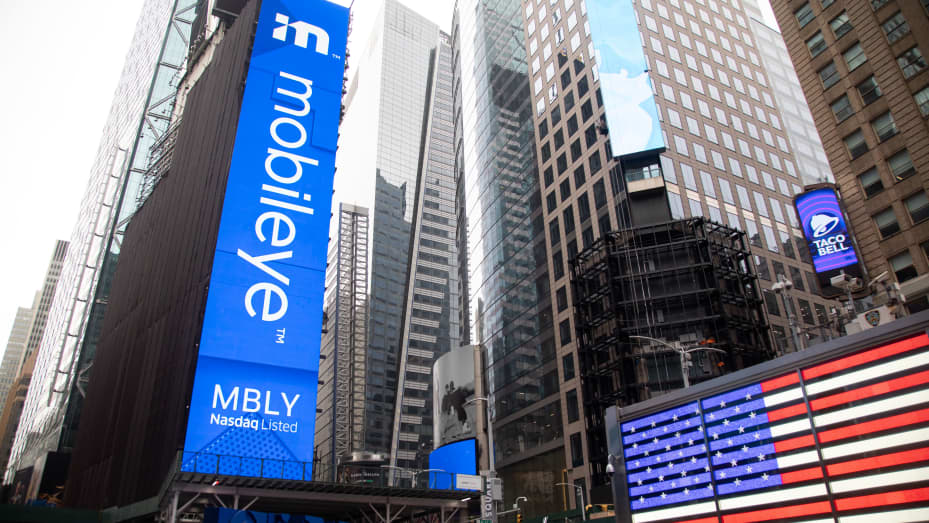
Mobileye Global (NASDAQ:MBLY) revises its annual revenue forecast downwards due to decreased demand for driver-assistance chips.
The company’s financial health remains strong with a low debt-to-equity ratio of about 0.0035 and a current ratio of approximately 5.13.
Despite current challenges, Mobileye’s strategic partnerships and significant role in the automotive supply chain highlight its potential resilience.
Mobileye Global (NASDAQ:MBLY), a leader in self-driving technology, is facing a challenging period as it revises its annual revenue forecast downwards. This revision is a direct consequence of a decrease in demand for its driver-assistance chips, primarily due to global automakers cutting back on production. This situation has led to a significant 9.1% drop in Mobileye’s shares in premarket trading, signaling investor concerns about the company’s future performance. Mobileye’s role in the automotive supply chain, particularly through partnerships with major automakers like Ford, Honda, and Volkswagen, underscores its importance in the industry. However, the current economic conditions, especially in key markets like China, are testing the company’s resilience.
The downward revision in Mobileye’s revenue forecast from the initial range of $1.83 billion to $1.96 billion to now $1.60 billion to $1.68 billion reflects a cautious stance towards the remainder of the year. This adjustment falls short of analysts’ expectations, which were pegged at an average of $1.87 billion. The company’s performance in the second quarter, with revenue of $439 million, although slightly down from the previous year, still managed to exceed analysts’ estimates. This indicates a mixed financial picture, where despite surpassing short-term expectations, the company is bracing for more challenging times ahead, particularly with its adjusted operating income expectations now reduced significantly.
The financial metrics of Mobileye further illustrate the market’s apprehension towards its future earnings potential. With a price-to-earnings (P/E) ratio of approximately -80.66, it’s clear that the market views the company as currently unprofitable or has concerns about its future earnings. The price-to-sales (P/S) ratio of about 7.20 suggests that investors are still willing to invest a significant amount for every dollar of sales Mobileye makes, indicating some level of confidence in its sales potential despite current challenges. However, the earnings yield of roughly -1.23% might deter investors looking for income, reflecting the company’s current unprofitability.
Mobileye’s financial health, as indicated by its very low debt-to-equity (D/E) ratio of about 0.0035, shows minimal reliance on debt, which is a positive sign in these uncertain times. Additionally, a strong current ratio of approximately 5.13 demonstrates the company’s robust liquidity position, ensuring it has ample current assets to cover its current liabilities nearly six times over. This strong liquidity position is crucial for Mobileye as it navigates through the softened business conditions, especially in the challenging market of China.
Despite the hurdles presented by the global economic conditions and the specific challenges in the Chinese market, Mobileye’s strategic partnerships and its significant role in the automotive supply chain highlight its potential resilience. The company’s cautious yet realistic adjustment of its financial forecasts reflects a strategic approach to navigating through these uncertain times. As Mobileye continues to adapt to the evolving market dynamics, its strong liquidity position and minimal debt usage stand out as key financial strengths that could help it weather the current challenges.

